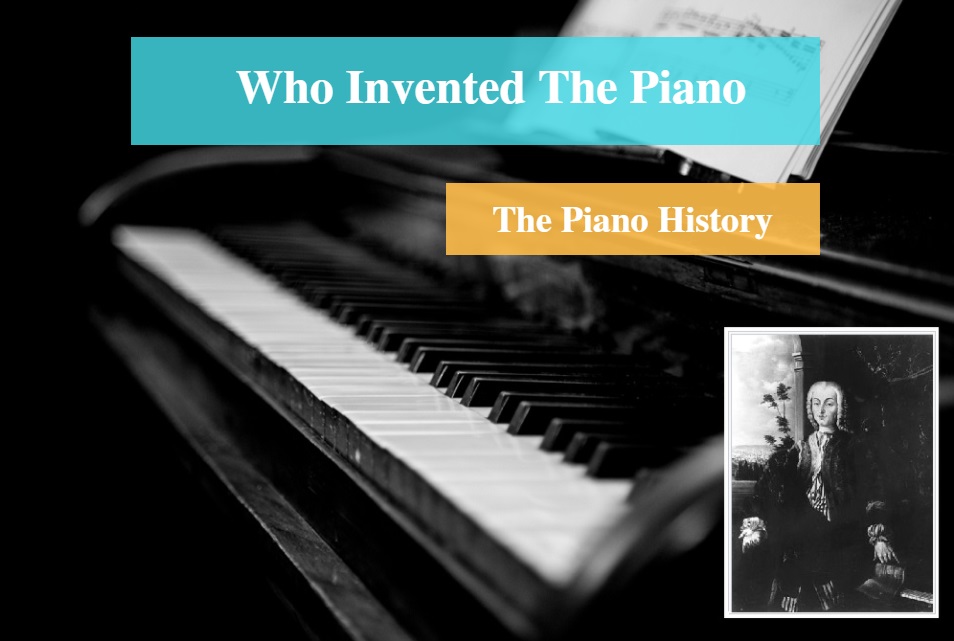
Before talking about the piano, who invented it, and its history, the early instruments which influenced and led to the invention of the piano should be mentioned.
The first mention of musical instruments actually dates back to biblical times, where both the harp and organ are mentioned.
The very first instrument which had a keyboard was the Hydraulis, which is the precursor to the organ of today’s use; the Hydraulis was built in Greece way back about 220 B.C., so music has obviously been around for a very long time.
Some of them were not only played with the hands, but also fists, wrists, feet, or knees! The piano itself is predated by several instruments such as the harpsichord, after which it was originally named, and the virginal and spinet.
Invention of Piano
The piano, also called pianoforte, has survived for over three hundred years of history and is one of the most popular instruments in the musical world. Some would argue that the piano is indeed the most popular instrument ever made.

Pianos are now found in homes, schools, churches, bars, and just about everywhere that plays any type of music. Pianos are so versatile; they can be used to play any genre of music. It’s been around longer than most of the today’s instruments and yet it is still played by more musicians than any other musical instrument other than the keyboard.
Just as it has been during the last three centuries, the piano is still a centerpiece of music and will continue to be far into music’s future. There’s just no replacing it.
Who Invented the Piano
Credit for inventing the first piano has been disputed over the years, as it wasn’t the first instrument that used a keyboard striking action. A variety of the same piano principle existed initially as early as 1440, which is a reason for some disagreement.
The first piano in modern form was invented by expert harpsichord maker Bartolomeo Cristofori at the beginning of the eighteenth century, in the 1700s.
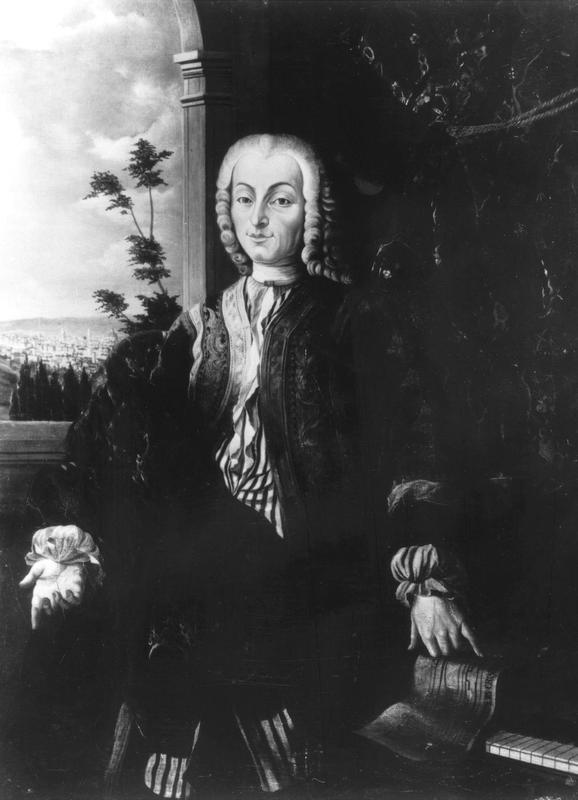
Some scholars argue that it was actually near the end of the seventeenth century, but most historians agree it was around 1709.
For someone who invented something so popular, his name has been forgotten when discussions are centered on Renaissance Era. Cristofori’s invention was perhaps the most important of its time and has endured for all these years, but it is often misconstrued to be invented by another man.
Cristofori was an accomplished craftsman born in 1655 in a town called Padua located in what was then the Republic of Venice. Not much is known about his earlier life, but as an adult, he worked and built a variety of instruments used for music, most notably as a harpsichord maker.
Early Life of Bartolomeo Cristofori
When he was about 33, he drew attention from a prince, Prince Ferdinando de Medici, who was the son and heir to Cosimo III, Grand Duke of Tuscany. Ferdinando, a lover, and patron of music, hired Bartolomeo Cristofori to be Keeper of the Instruments.
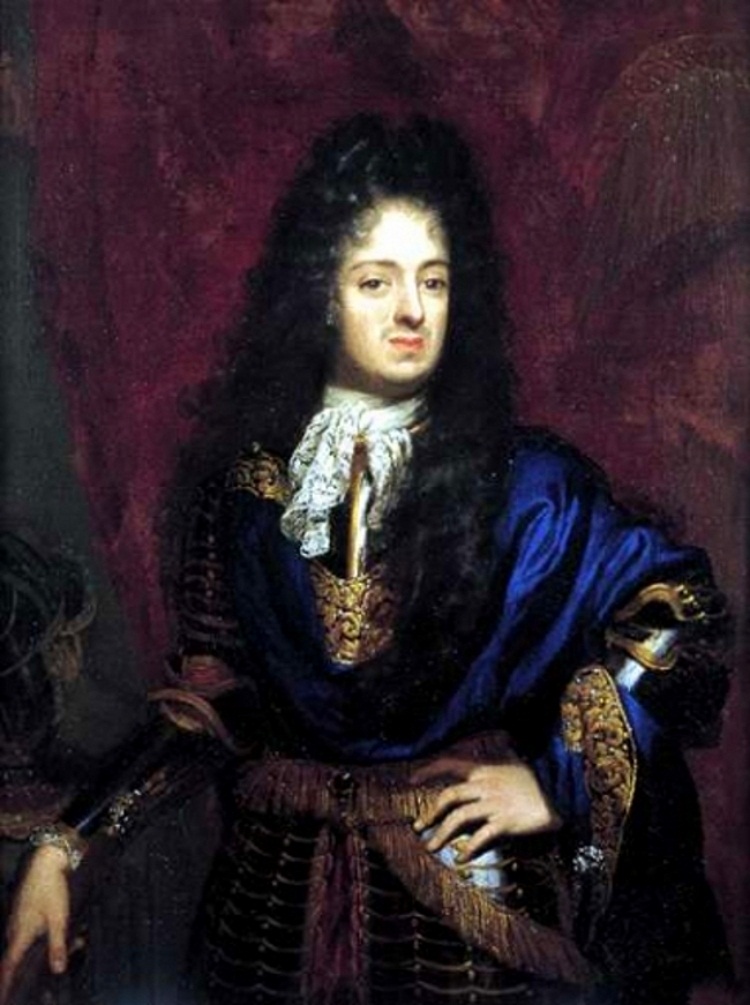
His purpose is to maintain Medici’s vast collection of instruments used to play music. In addition, it’s believed that Ferdinando wanted him, as an innovator in making instruments for music and to try to come up with new ones as well.
Prince Ferdinando disregarded several qualified individuals for the open position in favor of Cristofori and even ended up paying him a much larger amount of earnings than his predecessor in order to convince him to work for Ferninando and the Medicis.
Ferninando was fascinated with machines. In addition to a great variety of elaborate instruments, he also had a collection of over forty clocks. Most believe it was this particular fascination that interested him in Cristofori’s work with his elaborate mechanical action that was at the very core of his work on his newest invention, the piano.
Prince Ferdinando probably thought of him as a prized recruit as well as a musical innovator which would eventually be proven to be true. In May of 1688, he accepted the Prince’s job offer, moved to Florence, and was given a house.
As his title entails, Cristofori, as Keeper of the Instruments, tuned and maintained them, was in charge of transporting them, worked on his various inventions, and in addition, he did restoration work for the Medicis on valuable harpsichords that were already owned by Fernando and the rest of the Medici family.
Inventions of Bartolomeo Cristofori
During the last years of the 1600s, Cristofori invented two keyboard instruments prior to when he began his work on his piano. These musical devices, a multi-choired spinet, and an oval spinet were documented as belonging to Prince Ferninando, having been listed in his inventory in 1700.

First, he invented an instrument referred to as a spinettone, which means ”big spinet” in Italian. It was a large, multi-choired spinet, was basically a harpsichord, but in order to save space, its strings were slanted.
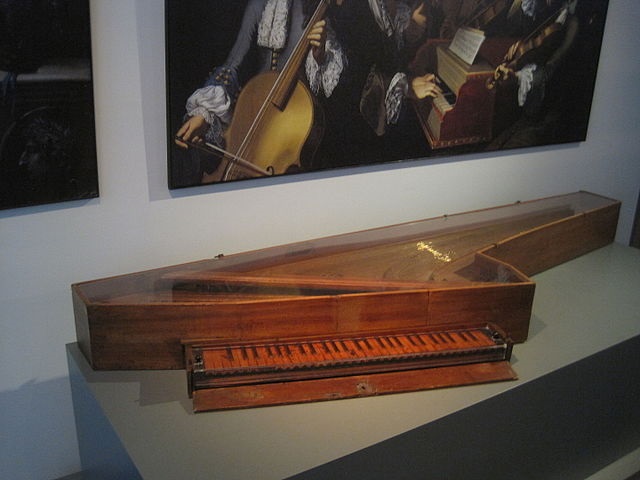
It’s believed that this instrument was built in order to be small enough to accommodate an orchestra pit which would have been crowded for performances but would still have the loudness of a multi-choir instrument.
The oval spinet housed its longest strings in the middle of its case and was considered to be a highly original type of virginal. In addition to inventing and building these two instruments, Bartolomeo Cristofoir also built instruments of existing types.
These were documented in, again, the same inventory of Prince Ferninando’s in 1700 and were an upright harpsichord, called a clavicytherium, and two standard harpsichords, one of which had a case made of ebony which was highly unusual for its time. Also included in the inventory was the first evidence of his piano’s existence which was made known.
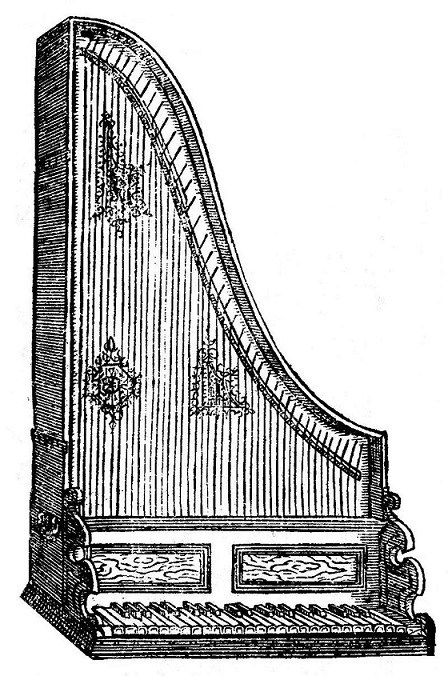
At this time, two main options for performances that were musical in nature were a harpsichord and a clavichord. Both instruments were played by pressing a key on a keyboard which resulted in vibrating its corresponding string.
Although both the harpsichord and the clavichord looked like pianos of today, there was one major difference between them. In order to produce sound, strings are struck by tangents on a clavichord, while on a harpsichord they are plucked by quills.
Unfortunately, neither were suitable for public performances. A harpsichord’s volume couldn’t be either increased or decreased while being played and was therefore unable to produce the same degree of emotion musically as most other instruments. A clavichord was much too quiet to be used for public performances, often being drowned out by other instruments.
There was a definite lack of a stringed instrument with a keyboard that would also provide a range of expression musically. A piano was most likely Cristofori’s attempt to combine a harpsichord with a clavichord, creating an instrument that would be loud enough for public performances and to be heard above other accompaniments as well as being able to change volume while playing to convey the song’s musical expression and emotion.
Combining both to form a piano would bring together the harpsichord’s volume of with the clavichord’s control. Hence, Bartolomeo Cristofori devised the gravecembalo col piano e forte, which literally means harpsichord with soft and loud. Additionally, Cristofori had solved the fundamental problem of the mechanics of the piano; the hammer needed to strike the key while not remaining engaged with it.
Bartolomeo Cristofori Lost Popularity
Initially, Cristofori’s piano was ill-received, in part due to his failure to make his instrument as loud as a harpsichord. The piano’s sound was thought by many to be too soft and dull. Eventually, it gradually caught on, increasing in popularity.
Another reason its recognition was slow to spread at first was the expense, having one made or even buying one already manufactured was too costly. At this time, a piano could only be purchased by mostly royalty and a few wealthy individuals.
It wasn’t until 1760, and well after Cristofori’s death in 1731, that the ultimate success of his creation finally occurred. Cheaper, square pianos were invented, making it possible for more people to afford one.
Cristofori persisted in making pianos and improving on their design until nearly his life’s end. In his later years, Giovanni Ferrini assisted him and then went on to continue in his master’s footsteps to have a very distinguished career of his own.
In addition, another tentative assistant, P. Domencico Dal Mela, went to build what would be the first upright piano in 1739, just eight years after Cristofori’s death. Unfortunately, in his senior years, Bartolomeo Cristofori had seriously declining health and had to be taken care of.
In his final will, he left the mass majority of his belongings to sisters whose last name was also Dal Mela in compensation for their continual care of him through his sicknesses and old age.
Cristofori, inventor, and builder of the piano died on January 27, 1731. He was seventy-five years old.
Exactly how many pianos were built by Bartolomeo Cristofori is unknown and of that number, only three have survived to modern-day. All three of these are dated during the 1720’s and all bear a same Latin inscription which, translated, basically meant that he, Bartolomeo Cristofori, an inventor from Padua, had made the instrument in Florence. Here are descriptions of each:
Dated 1720, this piano is kept in Metropolitan Museum in New York. Although the piano is still playable, considerable alterations have been made, which not only altered its original condition but also altered the way it sounds so that now it doesn’t provide an accurate indication of what it sounded like when first made.
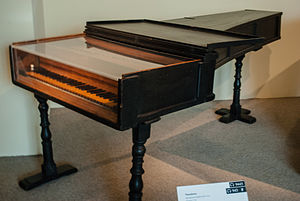
Dated 1722, this piano is kept in Museo Nazionale degli Strumenti Musicali in Rome. Unfortunately, the piano is unplayable due to being damaged by worms.
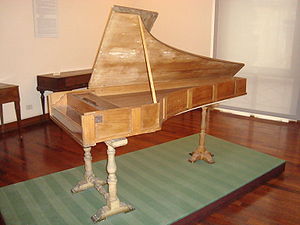
Dated 1726, this piano is kept in Muskikinstrumentin-Museum of Leipzig University. Although it is also unplayable, recordings of the way it sounded were made and can still be heard today.
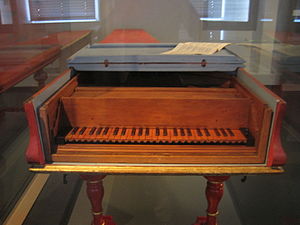
The pianos he built during the 1720s include almost all the features of a modern piano, only differing in how they are framed. He had wooden frames, which could not produce especially loud tones. Today’s pianos have a metal frame, leading to somewhat louder tones. This development in the build of piano didn’t occur until around 1820.
In addition to his three pianos mentioned above, six other instruments attributed to Bartolomeo Cristofoiri survived as well. They are following:
- Dated 1690 and 1693, two oval spinets
- Unknown date, a spinettone which also resides in Leipzig Museum
- Unknown date, a harpsichord mentioned earlier with an ebony case, housed in Museo degli Strumenti Musicali in Florence, Italy.
- Dated 1722, a harpsichord also kept in Leipzig Museum
- Dated 1726, another harpsichord also kept in Leipzig Museum
The later instruments built during Cristofori’s senior years include work done by Giovanni Ferrini, his assistant who went on in his master’s footsteps to build pianos using its same basic design but with a wider range.
Initial Credit Given to Gottfried Silbermann
After Cristofori’s death, his reputation lost popularity, its decline causing some to later believe that the modern piano had actually been invented by Gottfried Silbermann. Even though Silbermann was indeed an important figure in piano history, his instruments relied upon Cristofori’s design. Below is the Gottfried Silbermann Organ in Freiberg Cathedral.
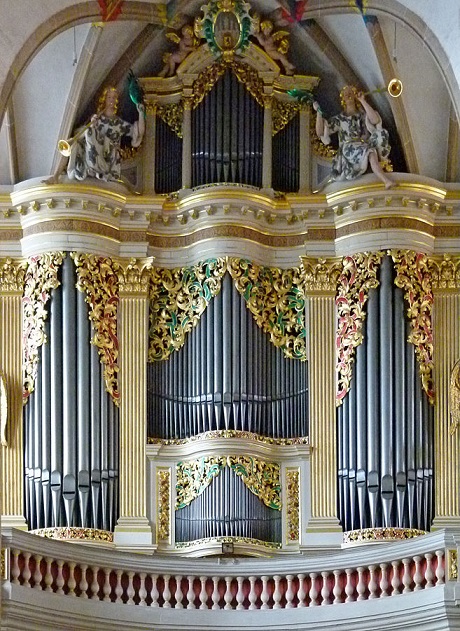
Correction: Credit Revert Back to Cristofori
Gradually, the error was corrected. His instruments were studied thoroughly during the second half of the twentieth century. Scholars expressed strong admiration for his work and hailed him as having tremendous ingenuity.
Bartolomeo Cristofori is given full credit for the originality of his invention, which he earned and it is one of only a few times when an important invention, such as it was, can be attributed to a single individual who also brought an unusual degree of perfection to it that was all his own.
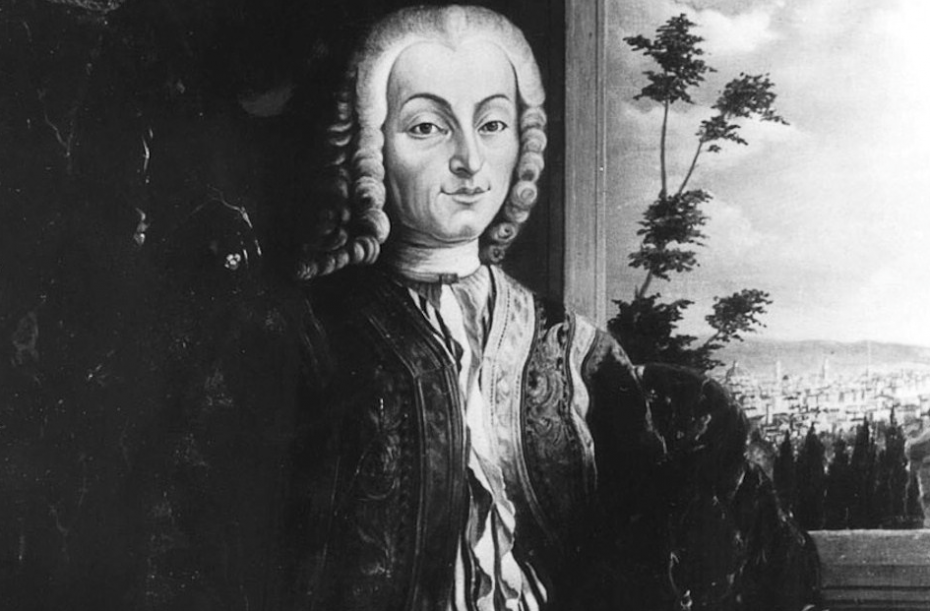
Google Doodle Honors Bartolomeo Cristofori’s 360th Birthday
In 2005, Google is celebrating the 360th birthday of Italian inventor Bartolomeo Cristofori, with one of its trademark doodles. Cristofori’s design was largely ignored in Italy initially, but it soon became known and adopted in Germany through articles in dictionaries of music.
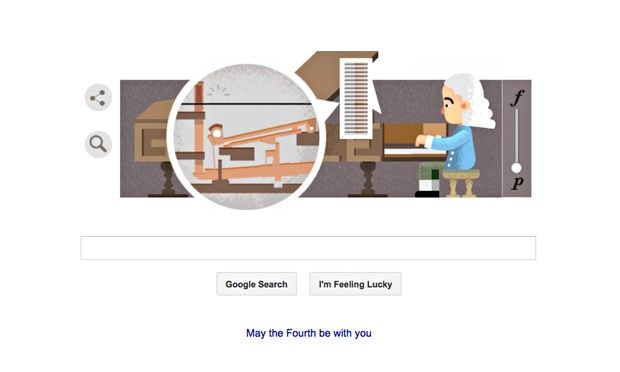
Mankind’s knowledge that sound can be generated from a taut, vibrating string, can be traced back to prehistoric times. In the ancient days, strings were attached and stretched over things like bows, boxes and gourds to accentuate the sound.
As a result, a range of stringed instruments with keyboards began emerging in Europe in the 14th century. The oldest of them was called Dulcimer. It was a closed and a shallow box over which two hammers were used to strike the wires which were stretched tightly. This then resulted in the development of the clavichord, which also made its appearance in the 14th century.
These then were followed by the Harpsichord in the 15th century. The Harpsichord was, however, limited or restricted to a single non-varying volume. Its demerit or fallacy was that its softness and loudness couldn’t be altered while playing.
As a result of which the performers were not able to convey the same amount of musical expression as compared to all other instruments. It was this desire of artists for more controlled and regulated expressions that it led to the invention of the piano, on which the artists could alter the tone, softness, and loudness with the click of their fingers.
The harpsichord was an especially important progress which gave rise to the invention of the piano. Because of its ability to produce sound more loudly than its predecessors and improvement in the action, it inspired many other musicians to compose for the keyboard.
Reasons for Considering Cristofori as the Original Inventor of Piano
The reason for considering Cristofori as the original inventor of the Piano is quite obvious.
He successfully solved the major problem of allowing the hammer to strike the string but at the same time not remaining in contact with the string and thereby causing dampness in the sound. This was the major problem found in the previous keyboards like the clavichord.
Cristofori could do without any examples to follow from. He practically used his own expertise and proficiency in the instruments to develop the concept of Piano. And because of him, many different piano makers could come up with innovations in approaches that came after.
His piano action served as a role model for all others to follow. Even though Cistofori’s early instruments were not as loud and competent as modern pianos and were made up of thin strings, the pianoforte, considerably, had more sustaining power and was louder than the harpsichord and the clavichord.
Musicians were now able to emulate emotions into their music, they were also able to control the volume of their instruments.
The History of Piano
Understanding how piano works makes its creation seem even more impressive. Modern pianos are highly versatile, capable of playing almost any piece of music that can be played by an orchestra. A standard piano has eighty-eight keys which encompass seven full octaves.
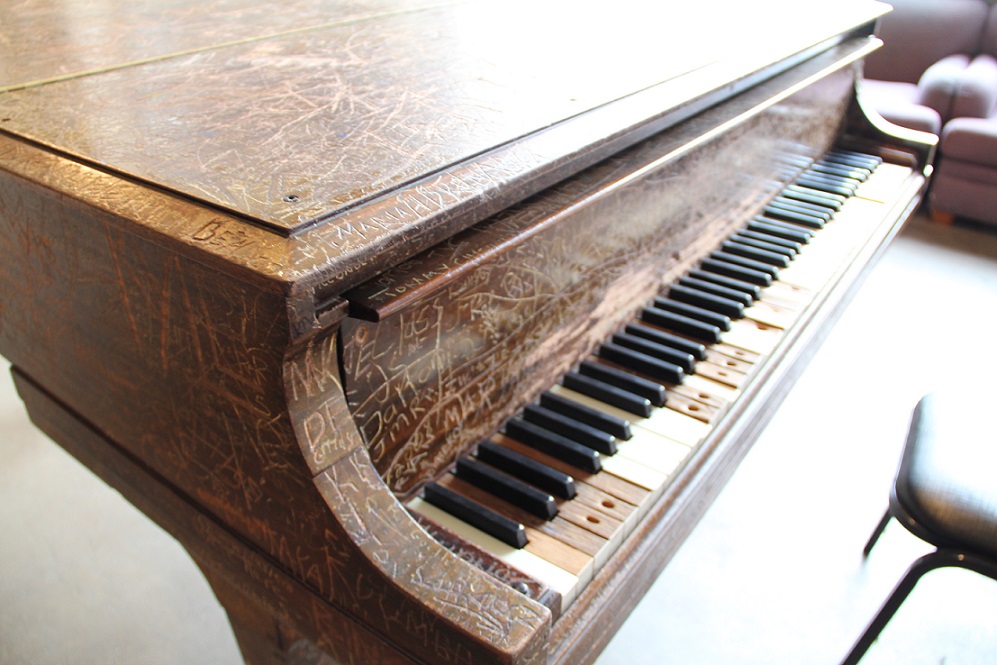
Felt-covered hammers, which are operated by hitting keys on a keyboard, hit wire strings that make a tone when struck. When first invented, these hammers were covered by leather instead. When a key is struck, it causes its appropriate string to vibrate. This vibration is then transmitted via a bridge over which the piano strings are stretched to a soundboard.
The soundboard acts as an amplifier, increasing the sound, and, in addition, affects its quality of tone. There are usually two or three-foot pedals found on most pianos. A right pedal, or damper pedal, lift all the piano’s dampers above its strings which allow them to vibrate freely.
A left pedal enables a hammer to only strike one string by shifting its keyboard and action sideways. A middle pedal, which is usually found on grand pianos holds a damper up of only specific keys that are being depressed.
Modern Piano and Early Piano
Modern pianos have a cast-iron frame which not only helps to support its structure better, but it also enables withstanding of tremendous tension from its strings being strung tighter.
Earlier pianos had wooden frames and could only allow their strings to be strung lightly. The result of this difference is that it allows modern pianos to be much louder than before, which was necessary for performances to be heard in sizable concert halls.
A piano now can sustain lyrical pitches, create all emotions and moods musically, and isn’t drowned out by other instruments. It can be heard through almost any assemblage of musical instruments.
The piano was indeed a remarkable creation and is just as remarkable today. At one time, every middle-class household who held any stature whatsoever was not without a piano; at times it was even looked upon as a status symbol and still seen as such by many.
Western composers beginning with Mozart have almost all played it, whether solo, chamber, or with a full orchestra, and modern pianos have been used in every genre of music. Cristofori’s harpsichord with soft and loud played a pivotal role in music and its development, and without it, without his piano, music would not be as it is today.
Early Fortepiano
In the beginning, the early piano was referred to as a fortepiano. The actual name began as fravicembalo (or clavicembalo) col piano e forte, which means harpsichord with loud and soft.
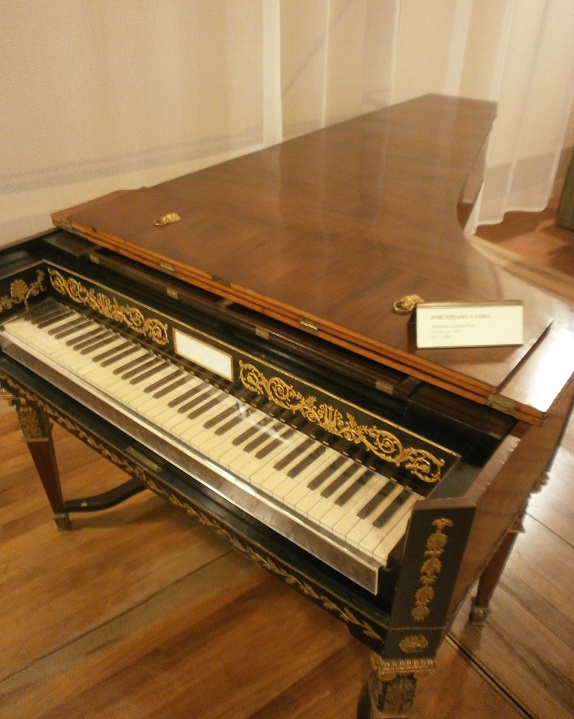
Bartolomeo Cristofori’s pianoforte was relatively unknown until 1711 when a popular writer wrote a passionate article about this new musical creation. As it turned out, most of the next generation of piano makers based their work upon the descriptions in this article.
One such builder was Gotfried Silbermann, who mistakenly has been identified as the inventor of the piano many times over the years, but of course, it was actually Bartolomeo Cristofori.
Silbermann’s creations, however, were almost identical to Cristofori’s, but he added one very important, key improvement; his invention was the forerunner of what’s called the sustain pedal that modern pianos now have.
The sustain pedal allows the player to sustain notes long after hitting its key without having to hold it down. This new innovation allowed pianists to continue holding a chord’s sound while repositioning his hands for the next note sequence, giving it a more seamless quality.
Gotfried Silbermann Introduced Piano to Johann Sebastian Bach
When Silbermann first introduced his version of the piano to Johann Sebastian Bach, in the 1730s, Bach didn’t like it. In Bach’s opinion, the higher notes of the fortepiano were too soft and wouldn’t allow a full dynamic range.
After heeding the criticism, Silbermann later gained Bach’s approval in 1947. In fact, Bach even served as a salesman, selling Silbermann’s pianos. Bach’s selling point was the piano’s ability to pay both loud and soft.
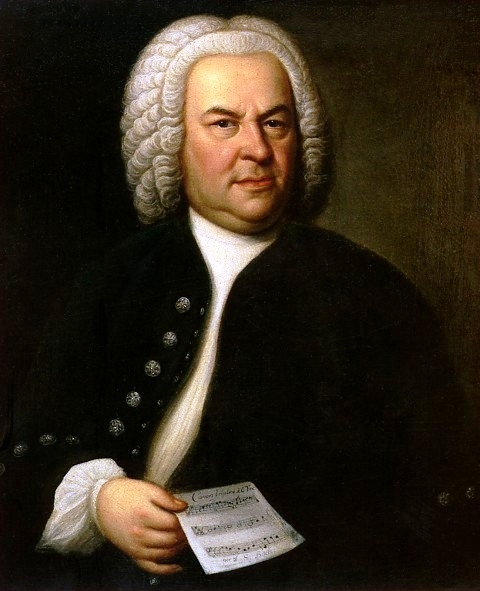
During the eighteenth century, piano making flourished, including Viennese makers whose pianos Wolfgang Amadeus Mozart composed his concertos and sonatas for. These pianos, with the opposite coloring of today’s, had black natural keys and white accidental keys.
Pianoforte better describes these early pianos of Mozart’s time for having a softer, more ethereal sound with much less sustaining power.
Post Mozard
Tremendous changes occurred between the years of 1790 and 1860, the Mozart era, which led to what we now know as the modern piano. Composers and pianists preferred more sustaining power and demanding it, leading to this piano revolution.

In addition, the Industrial Revolution brought resources, such as, piano strings made of high-quality piano wire and the production of metal frames that we’re able to withstand the tension of tighter strings.
This innovation not only allowed for louder play but also changed the sound a bit as well. The tonal range was additionally increased, as well, from five octaves, which was normal in Mozart’s time, to seven octaves, which is the average range of today’s pianos.
In about 1777, the original grand piano was built by the Broadwood firm which was basically a piano in a harpsichord box. They were the first builders to introduce a range higher than five octaves as well, during the 1790’s, then six octaves by 1810, and seven by 1820. Ludwig van Beethoven even used the extra notes the six octaves gave him in his later work.
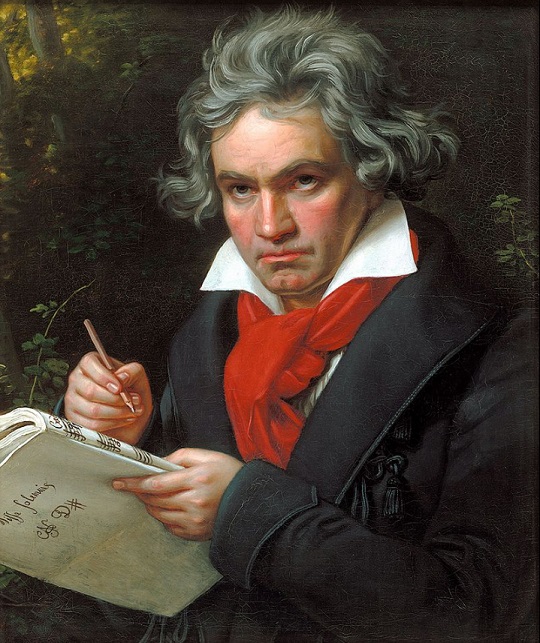
Piano innovation was moved to Paris by the 1820’s. Here the Pleyel firm made pianos which were played Frederic Chopin and the Erard firm built those played by Franz Liszt.
In 1821, one of the Erards, Sebastien, invented the double escapement action, incorporating a repetition lever. This permitted pianists to repeat the same note even if the key hadn’t risen back to its original position. This led to the musical method that was exploited by Liszt, rapidly playing repetitive notes.
The double escapement, which gradually becomes standard in all grands was revised by Henri Herz when the invention first became public. It is still incorporated into currently produced modern grand pianos.
Another improvement made is that of using felt to cover the hammers instead of leather or cotton. Felt, which was more consistent and permitted wider dynamic ranges, was first introduced in 1826 by Jean-Henri Pape. Invented in 1844, the sustenuto pedal allowed a much wider range of effects. It was invented by Jean-Louise Boisselot and was later copied by the Steinway firm in 1874.
Another innovation that helped to create the powerful sound that is known of today’s pianos was the addition of the cast iron frame. The cast iron frame was massively stronger than the previous wood frames. This change allowed even more string tension, which now can exceed twenty tons in a modern grand piano. This single piece of cast iron was patented by Alpheus Babcock in 1825 in Boston.
The American system was adapted earlier in the twentieth century. The expanded integrity of the structure allowed the use of thicker and tenser strings, as well as more numerous strings. Rival piano builders then began an intense competition from which, gradually, the modern form of piano wire emerged.
Other important advances included changes to how strings were strung, or cross-stringing, which permitted a narrower cabinet at the piano’s nose end. Over stringing, invented in the 1820s by Pape, was then patented by Henry Steinway in 1859 for use in grands.
After the invention of the mechanical action structure of the upright piano, they become the most popular model. Since the upright took up much less room than the grand, it was better sized for private home usage.
Type of Pianos
Basically, there are two types of modern acoustical pianos, the grand piano and the upright, but each have various styles. In addition, there are specialized as well as novelty pianos. The following is a short description of each of those:
- Grand pianos: The frame and strings are horizontal in grands and the strings extend away from the keyboard. There are several sizes of grands including the concert grand, the parlor grand, and the baby grand.
- Upright pianos: Uprights, also called vertical pianos, are more compact, having their frame and strings vertical instead of horizontal. They are also usually less expensive than grands. Because of this, uprights are generally used in schools, churches, community centers, as well as university music programs and are also very popular for in-home purchase.
- Specialized pianos: The toy piano, which was introduced in the nineteenth century, is a small piano-like instrument. The player piano is one that plays itself and actually has modern equivalents. The mini piano is another type, patented by the Eavestaff LTD company in 1934. The prepared piano was one that had modifications, making it different than a standard piano. Examples of this included placing objects inside the piano to alter its sound.
- Electric, electronic, and digital pianos: Electric pianos were first seen in the 1920s. They became popular in the 1960s and 1970s. Electronic pianos don’t have strings, tines, or hammers and are non-acoustical. Instead, they are a type of synthesizer that imitates the sounds of a piano. Digital pianos are also non-acoustical and additionally have no strings or hammers, but instead, utilize digital technology to reproduce the sound of an acoustical piano.
New Tech Pianos
Even though some of these are mentioned above, this is a better explanation of some of them. There are so many choices for the consumer who wants to purchase a piano or piano-related alternatives. Here’s some of what can be bought today.
Player Piano
These are also referred to as reproducing pianos and they’ve been totally updated since the movie era of paper roll pianos. They have actually grown in popularity over the last decade. Player pianos are not digital; they are real pianos with all the same parts as a modern acoustical version and can be played normally as well as playing itself.
Using sophisticated electronic tech, instead of paper that has been punched with notes, it uses CDs that have been specially formatted or internal memory systems. Some offer vast libraries of music from every genre available recorded by some of the world’s top pianists.
These systems are so sophisticated that they pick up every nuance of what was played and can play it back a note for note with stunning accuracy. Even if you can’t play you can enjoy hearing live played piano music with one of these player pianos. For those who do play, these can also be used to record your own music.
Digital Piano
Digital pianos produce real piano sounds taken from top models played by professionals. In addition, they sometimes offer many, even as many as a hundred, of other instrument, sounds as well.
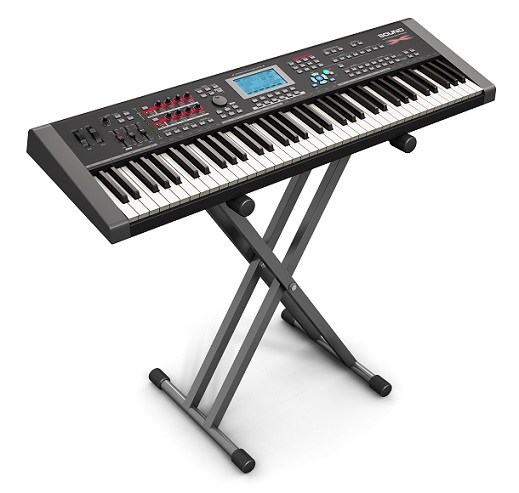
Being driven by software, there are many experiments that can be had by beginners. Some have lights that illuminate which note is to be played next, teaching beginners how to play an entire song. Some programs can have a screen displaying the notes as well.
Digital pianos can be connected to the computer as well as to other instruments. This is mainly for arranging music or orchestration. Since digital pianos have digital memory, owners can use it to download and play the new music of their choice.
Additionally, some digital pianos have unique functions as well, such as preset and combo sounds, which can give you a layering effect while playing.
Software
There has been tremendous growth in the piano software industry. The software can now convert music files to sheet music or print entire musical scores for analyzing harmonies and chord names.
Some software will even allow users to purchase sheet music over the internet and print it out immediately. This comes in handy when you can’t find the music score in a store. The software can be used to download literally hours of music without having to use CDs or memory. This technology is not just for player pianos, but can also be utilized by composers as well.
Hybrid Instruments
Presently, pianos can include acoustic grand or upright sounds via electronic features. As such, these can be played as a regular standard piano or the keys can trigger a synthesizer, making different sounds altogether.
Some are equipped to record and playback music to the pianist, with sensors recording every keystroke, including pedals and hammers. On playback, solenoids move both the keys and the pedals in order to reproduce the exact sounds which were recorded. Some of these hybrids even have built-in speakers.
Back to the Traditional Piano
Thankfully, the traditional acoustic piano is still in much demand. The basic design of the acoustic piano is basically the same as the very first models. Updates are made dependent upon materials; special wood may be used which makes the piano more durable or to make it more tonally stable.
Engineering has strengthened pianos, making them last for years while keeping their sound deep and rich. Keyboards nowadays have a great feel, staying in tune better, and working better for longer periods of time.
Readily available, concert grand pianos are used by songwriters and composers as well as conductors. Luckily they’ve also become more affordable so that more private individuals can own a grand of their own, but they are still somewhat of a status symbol. Baby grands are more popular than ever; meeting the needs of homeowners with limited space and beginners who just want to play.
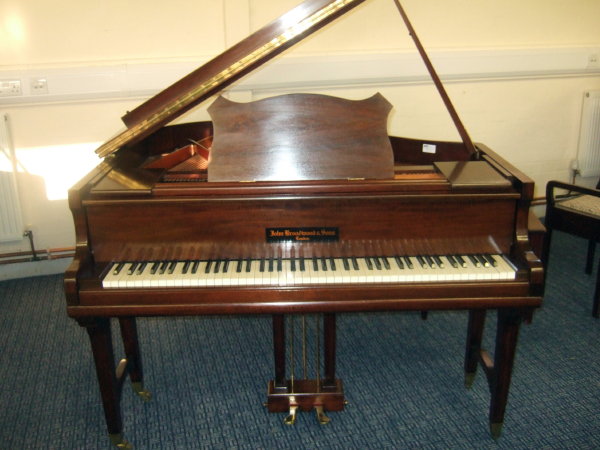
As a result of innovations made over the years, today’s pianos are more balanced, more responsive, and have improved keyboards. Unfortunately, with the invention of the radio, record player (phonograph), and movies, the once-rising popularity of the piano has been threatened.
Even though sales did decline, the number of pianos sold today has risen. These days, the digital piano now outsells the grand, but it’s for sure that it’s not going away. The piano, in all its forms, is still the most popular accompaniment with a guitar.
Construction of Pianos
Pianos can actually have up to twelve thousand moving parts. These moving parts support functions such as the following: keyboard, hammers, strings, dampers, soundboard, and bridge. Most parts of the piano are selected for durability as well as longevity.
The outer rim is specially chosen for these two reasons; generally made of hardwood such as maple or beech. Its heaviness is essential for the flexible soundboard, in that it’s best for vibration. Having a sturdy rim ensures the sound stays inside the soundboard instead of uselessly dissipating into other parts which produce no sound.
The hardwood rim is made by bending flexible strips of wood into the desired shape immediately after applying glue. This system of using bent hardwood was developed in 1880 by C.F. Theodore Steinway; using this method reduced manufacturing time and costs.
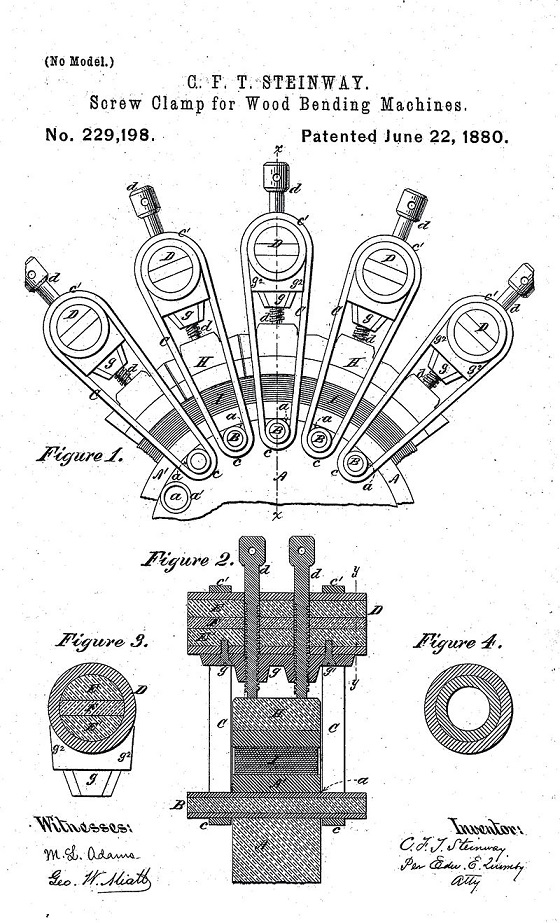
Improvements of Piano
Thick, wooden posts that stabilize the structure are located on the underside of grands and on the back of uprights. These posts are made of softwood for stability. These are capable of holding massive weight; the heaviest modern piano now on the market is the Fazioli F308, which weighs in at over a half-ton at 1260 pounds, or 570 kg.
Another area where strength is needed is the pinblock. The pinblock holds in place the tuning pins. These are generally made of maple or beech as is the rim. It’s also laminated for added strength, stability, and longevity.
Piano strings, or wire, are made of high carbon steel because they also need to be strong and durable in order to last for many years. Since any and all differences cause tonal distortion, these wires are made as identical as possible in diameter to one another.
If all the strings were monochord, (having one string) the bass would overpower the other sounds, but the tenor is bi-chord, (having two chords) and treble strings are trichord (having three chords.) This innovation compensates for the powerful bass and makes them all have the same amount of sound.
The metal frame is generally made of cast iron. Having a massive, heavy plate is favorable as well. A plate that’s insufficient would absorb the sound that was meant for the soundboard and reduce the overall tonal effect.
Since having a big, metal plate could take away from the overall beauty of the piano, makers are sure to polish, shine or paint, and engrave the metal plate. As a side note, in the 1940s, Alcoa worked with Winter and Company, all of which were manufacturers of pianos, in order to try to make the piano lighter by making the plate out of aluminum. It was not well accepted and was eventually discontinued.
Usually, the abundant parts of the piano action are also made of hardwood, such as beech and maple. However, plastic was used in the late forties and early fifties but was found to lose strength after only a few decades.
Steinway, the New York branch, incorporated Teflon, a synthetic material, beginning in 1961, which was made by DuPont. The Teflon material didn’t shrink or warp in hot and humid climates as wood might. Some are now made of carbon fiber that has been reinforced with plastic. These parts have so far performed in a reasonable manner.
The soundboard is made of spruce except in the lowest quality pianos. Spruce has a high ratio of strength to weight, making it strong enough to withstand the force of the strings, but yet still able to minimize acoustic imperviousness. Cheap pianos have plywood soundboards.
The hammers have to be covered with felt that’s soft enough so that it won’t create a loud, high harmonics that a harder hammer would produce. The hammer has several needed attributes. It needs to be lightweight enough in order to move quickly when the key is pressed. It also needs to be strong enough in order to respond to either the pianist hitting the keys hard and in turn, also the strings, using fortissimo playing, hitting the keys hard, or sforzando, hitting the keys lightly.
The Keyboard
Keyboards were initially made of sugar pine in the earlier construction years of pianos. Nowadays, keyboards are made of spruce or basswood. Spruce is reserved for high-quality pianos.
Traditionally, black keys are made of ebony and the white keys are covered with pieces of ivory, but since the animals which yield ivory are now endangered, most makers now use plastics. Invented by the Yahama firm, Ivorite mimics the look and feel of ivory, and has since been imitated by other makers as well.
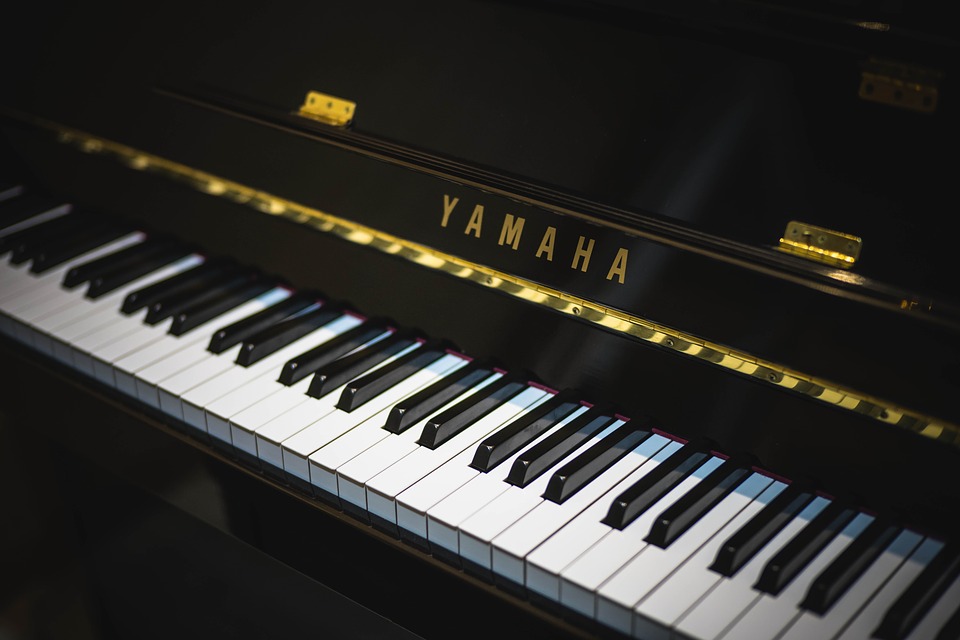
Almost all modern pianos, except for special ones, have eighty-eight keys, fifty-two white keys, and thirty-six black keys. Some makers have extended in one way or the other. Extra keys are sometimes hidden. These hidden keys are generally placed under a small hinged lid so that they can be covered instead of disorienting a pianist not familiar with the extra keys.
Sometimes the colors of these extra keys are reversed as well, but some have the same appearance as the other keys. Primarily, extra keys are added for the string’s increased resonance, but only a very few works of music have been composed using these extra keys.
A toy piano maker, Schoenhut, built small replicas of both the grand and upright with only forty-four or forty-nine keys and they also have a shorter distance between the pedals and the keyboard. The toy pianos are actually true pianos with true piano action and strings. These pianos were manufactured because of many requests to do so.
Invention of Double Keyboard
The double keyboard is a rare variant invented by Hungarian composer/pianist Emanuel Moor; it’s called the Emanuel Moor Pianoforte. This particular variant consists of two keyboards, one basically over and above the other.
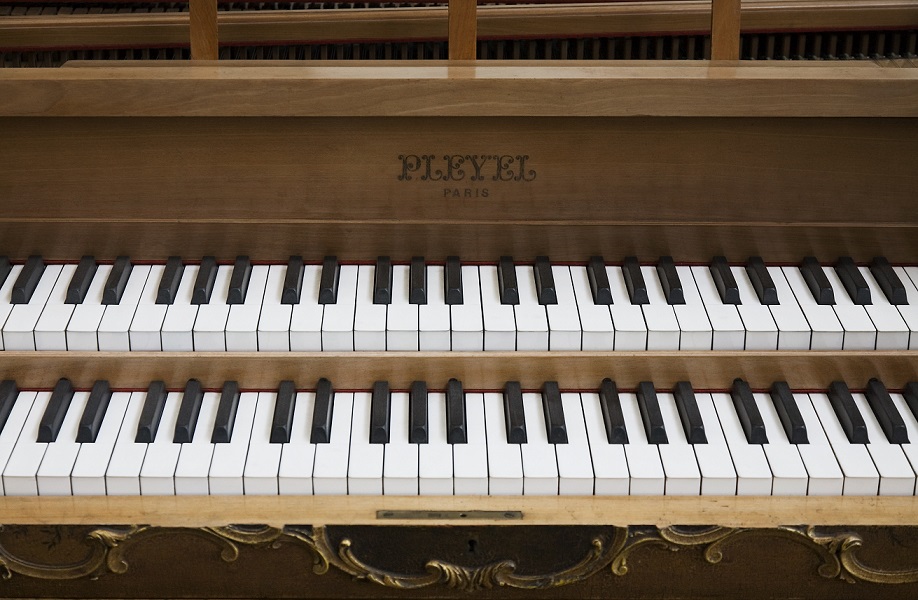
The lower keyboard is that of a normal, eighty-eight key keyboard, but the other has seventy-six keys that are an octave higher. This specific variant allows the pianist to play two octaves with one hand, which is impossible to do on a conventional keyboard.
Additionally, a fourth pedal was also featured with the design, coupling the two keyboards. Pushing this particular pedal in would allow both keyboards to be played at once, the upper being one octave higher. Only about sixty of these pianos were made. Other pianos have been made since that incorporate an extra keyboard.
The Pedals
Pianos have had some type of pedals since the earlier days; in the eighteenth century, they were pushed upward by the knee instead of being depressed by the foot. Most modern grand pianos have the following three pedals: una corda, or the soft pedal, sostenuto, and sustain pedal.
Most modern uprights also have three pedal, which is the following: the soft pedal, the practice pedal, and the sustain pedal. Some cheaper pianos may only have two pedals, lacking the practice pedal, and the upright standard in Europe is two pedals, una corda, the soft pedal, and the sustain pedal.
The sustain pedal often referred to as the damper pedal, is often referred to as just ”the pedal” due to the fact that it is the one most often used. Placed as the rightmost pedal, it lifts all the dampers from the keys, sustaining all notes played.
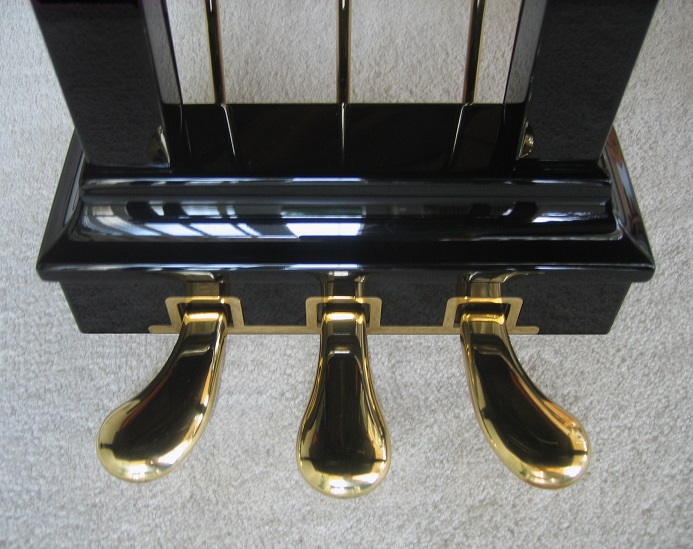
Additionally, it alters the overall tonal effect due to allowing the strings not directly played to reverberate as well. This allows harmonically related vibration, where the strings closest to that being played will also resonate.
The una corda, or soft pedal, is placed leftmost. In grands, so that the hammers hit two of three strings per note, the soft pedal shifts the entire keyboard action to the right. In the beginning, this only allowed one string to be played, hence ”una corda”. This softens the note and changes the tones as well.
Unfortunately, it is impossible in uprights, so this pedal on those types of pianos moves the hammer closer to the strings. This movement enables the hammers to strike with less kinetic energy, providing a softer sound, but not changing the tonal range.
On grand pianos, the middle pedal is referred to as the sostenuto. This specific pedal keeps raised all dampers which are already raised when the pedal is depressed. Due to this, it is possible to sustain only certain notes while the pianist’s hands are free to move to the next set of notes/keys.
On most uprights, the pedal in the middle is called the practice, or celeste pedal. The Celeste drops a piece of felt between hammers and strings in order to mute the sound greatly. This particular pedal can also be placed in a locked position. Although there are variants of these three pedals, they are generally laid out as such.
Technique of Playing Piano
The piano can be played from the same as other instruments, from written music, by ear, or by improvising. The technique has evolved ever since the piano was first invented, as it was on the like-type instruments before it.
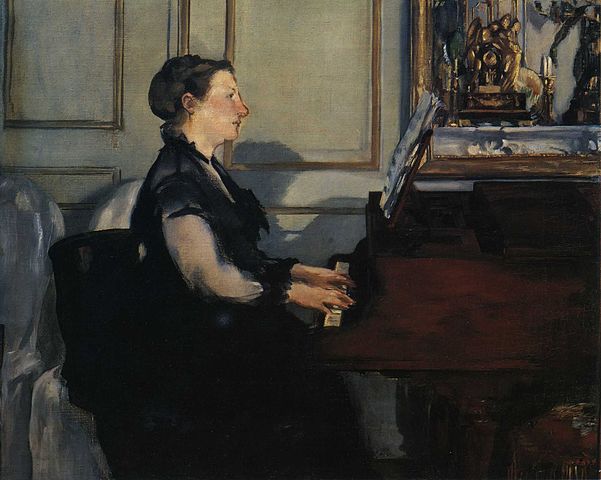
Musical styles have changed, as have preferences, over the last two centuries, adding to the growth and evolution of schools of playing as well as distinct approaches. The technique is often viewed as executed by personal preference of music, expressing the individual’s emotions as well as mental and physical aspects he is feeling.
Piano Styles
Performance styles differ vastly from the pianos the first invention to modern-day ones. The pianoforte of earlier composers such as Mozart and Beethoven was rather different from today’s piano.
Having a dynamic range that was narrower and smaller octaves combined to make the pianoforte somewhat quieter. Starting during Beethoven’s time, the fortepiano evolved into a closer resemblance to the modern piano, which was in wide use by the nineteenth century. In addition to featuring an octave higher, they also added about thirty more keys, extending not only the deep base range but also the high treble range.
As they were mass-produced in factories, families could better afford uprights, as also could music halls and pubs. This particular evolution brought entertainment in the form of a solo pianist or in combination with a band. Pianists accompanied singers and dancers just as their predecessors did before them with the harpsichord.
More Music Genres
American musicians played for the working crowd in pubs and bars during the nineteenth century, specifically African-American composers, developing new genres of music.
Some of these genres include ragtime, boogie-woogie, blues, jazz, honky-tonk, bebop, and combined genres as well to make new ones such as jazz-funk and jazz-rock. Additionally, pianos have prominently been used in rock and roll/rock music.
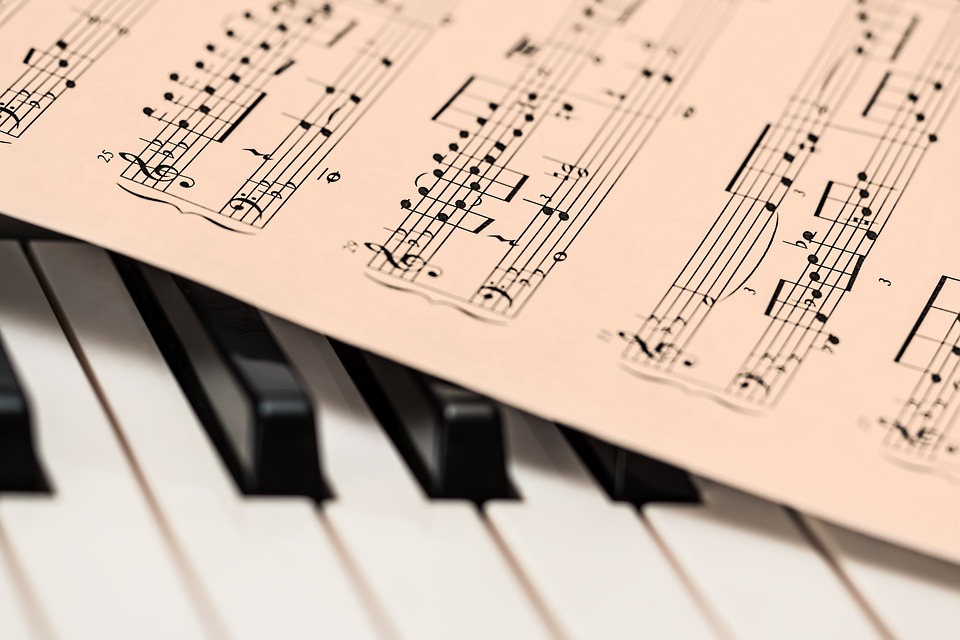
Some entertainers who made piano music popular were Jerry Lee Lewis, Billy Joel, Little Richard, Elton John, and many, many others. Pianists have also invented a modernist style of playing, appealing to composers of today such as John Cage and Philip Glass.
Piano History and Who Invented the Piano
The story of the inventor of the piano is truly remarkable and inspirational and so is the instrument itself. Every musician of modern day owes some degree of gratitude for all the mentioned inventors with the whose contribution, we can enjoy such sensational musical till date.
No matter the style or technique being used or what type, the piano has endured for over three hundred years. It’s safe to say that it will continue to endure as long as people listen to music.
Like this post? Don’t forget to share it with your friends!
